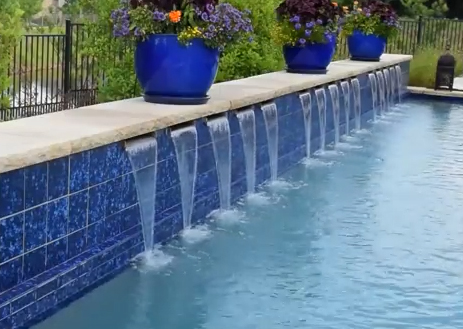details
‘I take a lot of pictures of my work – so many, in fact, that friends and colleagues often tease me about it.’ That’s how David Tisherman opened his Details column of June 2003, broaching a subject near and dear to his heart. ‘[W]hat may seem like an obsession to others seems like good, commonsense business practice to me. In fact,’ he continued, ‘I believe that every single designer and builder involved in the creation of quality watershapes should record his or her work photographically – and should make a point of doing so in a way that
Safety is never far from my mind as I design for my clients, but as important as it is, it's seldom the only thing on my mind as a project comes together. In fact, balancing the need for features we must include for safety's sake with our everyday passion about never compromising on aesthetics is something I consider with every detail. Whether it's the extent to which
In most of our projects, we do the lion's share of the work related to our clients' backyards. We'll design and build the pool and spa, set up the landscape and take care of all of the components of outdoor living from laying decks to installing outdoor kitchens. We like having that level of control over exterior environments, and our clients seem to appreciate the single-source service we're able to provide. Every once in a while, however, we'll come across a project so outstanding that we're perfectly happy to join a great team, interpret someone else's plans and
‘In discussing coping and decking,’ noted David Tisherman in his February 2008 Details column, ‘ I invariably combine them because, in my view, they are truly inseparable: For a design to succeed, both must work together because they play such important roles in
‘Not long ago, I was asked by a reporter from The New York Times to define the main difference between swimming pools now compared to what they were 20 years ago. As we talked,’ wrote David Tisherman in his Details column for the December 2007 edition of WaterShapes, ‘it became clear that she was mostly thinking about technological breakthroughs in pumps and chemical treatments and the like. ‘I confirmed for her that, yes, those products had come a long way. But I wouldn’t let her stop there, suggesting that there was much more than
‘Throughout recorded history,’ wrote David Tisherman in the July/August 2002 edition of WaterShapes, ‘people have tried to control the elements in every which way they can. We plant trees to block the wind, build levees to hold back rising river water and dikes to hold back the seas. We build skyscrapers that defy gravity, winds and earthquakes. ‘For all of this ingenuity, however, we sometimes don’t do a very good job. When our efforts to control the elements fail
If friends had told me that, eight years after leaving the Las Vegas desert, I'd be incorporating synthetic turf in a high percentage of my outdoor spaces in Texas, I would've said "No way!" What a concept! I now live and work where there's no water shortage, so why on earth would my clients or I have any interest in finding substitutes for big expanses of lawn? Well, what I'm seeing now is that the low-maintenance, long-lasting faux-grass solution is
One of the things I like most about working in the watershaping business these days is how clever and creative designers and builders have become at what they do. It's not just the big details such as vanishing edges, play-pool configurations, sun shelves or swim-up bars. And it's about more than beach entries, grottos, laminar jets and cool spillways. Those are all great, every one of them, but what I'm talking about here is the attention to the small things - the subtle ways more and more watershapers are finding to make



















Chromatic Virtues